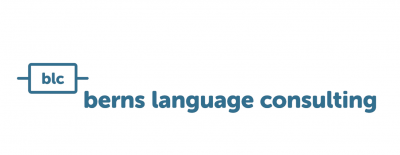“We’ll just buy a good machine translation system and everyone can just use that!”
This is pretty much what corporate management sounds like for translation managers when it comes to introducing machine translation. However, prior to implementing such a tool, the risks and complexity of introducing MT should be assessed carefully. For our customers, this is where scoping has proven its worth. What this means and how scoping should be carried out in a company is the subject of my blog.
The first step is to prepare a comprehensive catalog of requirements for an MT solution. This is then followed by a system market review and detailed testing of the selected providers. Above all, however, scoping involves one thing: detailed coordination with the people in charge of MT as well as its future users.
Scoping requirements
Usually, the decision to introduce MT is based on similar motives. To name some: saving costs, reducing turnaround, making fast translation in all languages accessible everywhere and to everyone in the company. However, the concrete requirements behind such a vision vary from customer to customer. If you look at the individual aspects of this vision, the challenges become evident:
- Security requirements on the part of IT and the different departments
- Language directions and content types to be machine translated
- Existing resources for MT training
- Systems, into which MT should be integrated
- Expected translation volumes
- Personnel capacities and skillsets for MT implementation
- Affected translation processes and workflows
What are the specific requirements per department?
To figure this out, interviews with project managers, translators, and user groups are a good starting point. Furthermore, having a predefined catalog of questions on languages, text types and content types helps a lot. During the interviews, it often becomes clear that the larger a company is, the more MT construction sites have already emerged over the years. While some departments already have mature MT projects, others are still in their infancy. A new MT project benefits greatly from bringing together the approaches and progresses of different departments as well as all stakeholders. Ideally, the MT project will benefit from existing ideas and a repetition of missteps can be avoided. Who knows – perhaps synergies for future processes might emerge as well.
Successful scoping ensures that these potentials are documented and utilized efficiently. In the context of MT introduction, use cases, user groups and used as well as tested MT systems are of particular interest.
Scoping in the critical phase – vendor selection
After evaluating all question catalogs, the focus shifts to the extensive MT system landscape. From the summarized company requirements and user stories, concrete questions for a “Request for Information” (RFI) are generated. These are then passed on to a pre-selection of potential MT providers. Such an RFI primarily contains functional but also financial and organizational requirements that are particularly important for the respective company. The weighting of individual criteria is always carried out in close coordination with the customer. Only then is a targeted selection of potential, suitable providers possible. Having a good RFI already lays the groundwork for later requests for specific offers from vendors.
Technology and testing
Typically, after evaluating RFIs, there is more than one potential candidate for the introduction of a MT system. To select the right candidate, testing of engines from different vendors follows. This is important as the quality of the MT output is crucial for the previously identified use cases. To do this, a number of language directions prioritized by the customer can be trained directly with the providers. Here, we put particular emphasis on the preparation and compilation of the training data for each language direction. This includes the extraction of language data from translation memories and other formats. Moreover, formal and linguistic grooming of the training texts and terminology integration come into play
After training, the engines are evaluated using representative test sets, i.e., a limited set of source sentences. Then, language experts post-edit and evaluate the respective MT output. The level of detail of these evaluations is variable and is agreed upon with the client in advance. Everything from scale-based assessments of readability and accuracy to error annotations based on quality metrics is possible. This is why scoping provides an analysis of all relevant criteria regarding MT quality.
Management – Thumbs up?
Finally, the effort is paying off. The project team is now armed with use cases, comprehensive data analysis, a business case and a list of potential vendors. With this, everything is well prepared for the management presentation. Thanks to scoping, the overall goal is defined and everyone has clear roles as well as task assignments. The roadmap is in place as well. The path to MT integration is clear – now it’s time for implementation!
MT Scoping: Conclusion
Scoping is similar to distillation. It’s a process, where the starting point is a seemingly impenetrable mass of requirements, desires, and even misconceptions. Scoping helps to distill the key findings. Like this, they can hold their ground in front of the management department an in addition, they pave the way for a good MT solution within the company.




